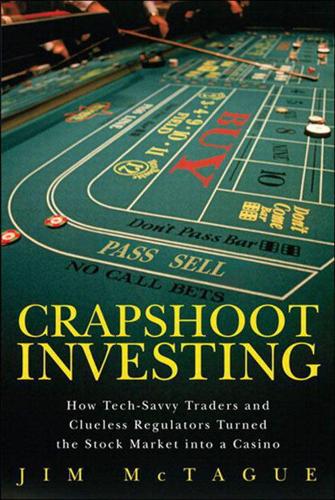
Crapshoot Investing: How Tech-Savvy Traders and Clueless Regulators Turned the Stock Market Into a Casino
by
Jim McTague
Published 1 Mar 2011
Equinix, a trading firm, built a colocation facility the size of five football fields four miles west of Manhattan in Secaucus, New Jersey.2 The NYSE Euronext built a facility for its matching engines the size of seven football fields in Mahwah, New Jersey, and invited HFT firms to collocate there. Mahwah is an Indian name that translates to “where paths cross.” Exchange officials made a big show of planting six buttonwood trees outside the warehouse-like facility to reference the NYSE’s Wall Street roots, where trading supposedly began under a buttonwood tree at the tail end of the eighteenth century. The shade of the buttonwood tree was free. The NYSE Euronext expected its Mahwah operation to become a $1 billion business.3 The brokers, in turn, saw a way to profit by subletting space on their servers at these collocation facilities.
…
., 194 arbitrage, 161-162 arbitrage opportunities, 70 Archipelago, 33 Arnuk, Sal, 11-25, 44-45, 61, 217 Atkins, Paul, 145-146 ATSs (Alternative Trading Systems), 93 regulation of, 139-144 Australia (film), 78 automated liquidity provision, 161 Automatic Trading Systems (ATSs), 93, 139-144 Aykroyd, Dan, 29 B Bachus, Spencer, 187 Baker, Jim, 130 BATS (Better Alternative Trading System) Exchange, 78 Bee, Samantha, 44 Berkeley, Alfred, 173 Biden, Joe, 47-49, 52-53 “Big Picture” blog (Ritholtz), 234 Birk, Roger, 116 Black Monday (October 19, 1987), 125-133, 179 Blair, Bruce, 160 Blankfein, Lloyd, 99 Blodgett, Henry, 189-190 Bloomberg, Michael, 100 Boesky, Ivan, 126 Boggs, Caleb, 48 Bookstaber, Richard, 157 Born, Brooksley, 99 Boston Stock Exchange, 33 BP oil spill (Deepwater Horizon), 67 Brady Commission, 128 Brady, Nicholas, 83, 128 broken trades after Flash Crash, 83, 225 brokerage houses, internal trades, 31-32 Brown, Alistair, 17 Brown, Gordon, 66 Budge, Hamer, 107 Buffett, Warren, 234 Bulgaria Confidential (newspaper), 42 Bush, George H.W., 102 Bush, George W., 50 busted trades after Flash Crash, 88 buttonwood trees, 168 C Cameron, David, 66 Canaday, Ed, 41 capital crisis of 1969-70, 105-111 Casey, William, 120 CBOT (Chicago Board of Trade), 28-30 Cembalest, Michael, 207-208 CFTC (Commodities Futures Trading Commission), 27 Flash Crash report, 213-227 immediate reaction to Flash Crash, 82 investigation of Flash Crash, 183, 187 consolidated tape delays, 202-204 quick fix rules after Flash Crash, 85-87, 90 CFTC-SEC Joint Advisory Committee Accenture testifying before, 85-90 investigation of Flash Crash, 91-95 Chicago Board of Trade (CBOT), 28-30 Chicago Mercantile Exchange (CME), 28-30 Chilton, Bart, 214 Christie, William, 139 circuit breaker rule, 188 circuit breakers, 63-64, 89 Citigroup, 166 Clinton, Bill, 53, 97, 100-102, 143 Clinton, Hillary, 100 Close Encounters of the Third Kind (film), 49 CME (Chicago Mercantile Exchange), 28-30 collocated servers, 17, 22, 34 collocation, origins of, 165-169 commission structure, fixed commissions, 118-120 commodities exchanges correlation with equities exchanges, 94 history in United States, 27-30 unification with equities exchanges, 36, 70 Commodities Futures Trading Commission.
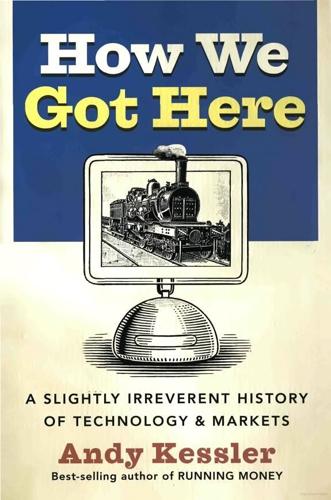
How We Got Here: A Slightly Irreverent History of Technology and Markets
by
Andy Kessler
Published 13 Jun 2005
Investors were more willing to take the risk if they knew they could sell the scrip at some point. Of course some idiot top ticked it at $310, just like some idiot in 2000 would top tick the NASDAQ at 5000. With risk and liquidity comes volatility. Trading scrip on the muddy streets of a New York was no way to go through life. So on May 17, 1792, 24 brokers and merchants met under a buttonwood tree, which has since been replaced by a building at 68 Wall Street. Voila! They formed the first organized stock exchange in New York. They were hungry for action and someone had to move those bonds and scrip around. A stock exchange could not be much larger than someone’s voice could carry, so they eventually moved indoors to a rented room on Wall Street.
…
The year before, in 1790, the new government of the United States of America sold $80 million in bonds to pay for the Revolutionary War and General Washington’s bar tab. Trading scrip on the muddy streets was no way to go through life, so the first organized stock exchange in New York was formed May 17, 1792 when 24 brokers and merchants met under a buttonwood tree that has since been replaced by a building at 68 Wall Street. Two centuries ago, standing on a soapbox was considered high tech. A stock exchange could not be much larger that someone’s voice could carry. These guys were hungry for action and someone had to move those bonds and scrip around. This group became the New York Stock & Exchange Board, and all sorts of bonds and other bank stocks began to change hands there.
…
In the first half of the 19th century, transportation was the rage: Turnpikes were funded in the early 1800s and canals were funded between 1820 and 1850. But then in 1844, investors saw the introduction of the Morse telegraph and an era of faster and cheaper communications began. Wall Street immediately saw the benefits. The telegraph gave investors outside of New York access to more up-to-date pricing information. While the area under the Buttonwood Tree didn’t get bigger, the telegraph funneled more cash into the exchange. Technology constantly increased the speed of information and speed meant more profitable trades. Telegrams were invented to relay messages. The most amazing stat I found suggests that trades in stocks and bonds accounted for over half of the telegraph usage in those days.
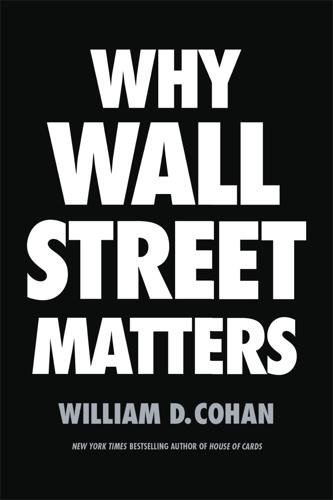
Why Wall Street Matters
by
William D. Cohan
Published 27 Feb 2017
The city’s first “stock exchange” was opened at 22 Wall Street on March 1, 1792, by a group of “auctioneers” who had been designated by the Treasury to sell the bonds that were issued in order to pay off the young nation’s debt in accordance with Hamilton’s plan. Farther east on Wall Street, at around 70 Wall Street, stood one of the lone trees—a buttonwood tree, which we now call a sycamore—that had survived the Revolutionary War intact and thus had metaphorical importance to the young nation. Under that tree, a small group of brokers had already been in the business of buying and selling the new nation’s Treasury debt. They had also been meeting and trading at the Tontine Coffee House, farther east on Wall Street, which was named after a seventeenth-century method of raising capital devised by Lorenzo de Tonti, an Italian, and which was particularly popular in France.
…
So when we imagine that Wall Street is the sole cause of all financial calamities, that is not even remotely correct. It’s a crucial point to remember. Of course, that doesn’t mean Wall Street hasn’t been involved in, or exacerbated, its share of financial turmoil. In March 1817, the brokers who had been trading for years on Wall Street at the Tontine Coffee House and under the buttonwood tree decided to organize themselves more formally in what they called the New York Stock and Exchange Board. They rented a room at 40 Wall Street and started meeting regularly. The purpose of the organization, the precursor of what became the New York Stock Exchange, or the NYSE, was for the president of the board to announce on a daily basis the prices for which the stocks of the companies listed on the exchange were bought and sold.

The Greed Merchants: How the Investment Banks Exploited the System
by
Philip Augar
Published 20 Apr 2005
Investment bankers appeared to be the miracle workers who made it all happen and by the end of the twentieth century they laid claim to a special place in American life ‘fusing the character of a trusted adviser with the capabilities of a global financial intermediary’.4 Admired by business, fêted in the media and with Washington eating out of its hand, the Trusted Adviser ruled supreme. A Chequered History It had not always been like that. In fact for much of its 200-year history investment banking in America had been viewed with suspicion. The tone was set in 1792 when twenty-four brokers and merchants met under a buttonwood tree on Wall Street to form what would become the New York Stock Exchange and signed a pledge to ‘give preference to each other in our negotiations’.5 This shady understanding encouraged the idea that brokers looked after themselves first and their clients second and helps to explain why the American public has never been entirely comfortable with securities and banking people.
…
Partnerships and private companies now seemed too risky and under-capitalized and many investment banks went public – Morgan Stanley in 1986, Bear Stearns in 1985 and Goldman Sachs in 1999 – or merged with stronger partners – Salomon Brothers merged with the commodities trader PhiBro in 1981, Lehman Brothers sold itself to Shearson American Express in 1984, Kidder Peabody was bought by GE in 1986. The abolition of fixed commissions finally marked the end of the era of ‘giving preference to each other’ in securities trading that had begun nearly two hundred years earlier under Wall Street’s buttonwood tree. Broking now became more competitive and cut-throat. Increased competition in broking soon spread to the hitherto gentlemanly business of corporate advisory work. Most white shoe investment banks still practised relationship banking in that they gave free advice in the knowledge that clients rarely changed adviser and would eventually pay them through underwriting fees when the time came to raise new capital.
…
Why else would American IPO spreads have clustered round the 7 per cent figure? The explanation is unlikely to be explicit collusion, which would be simply too risky. Conspirators would be too fearful of the word leaking out and of the serious consequences. It is impossible to believe senior bankers would be so unwise as to sit round a table and reach a modern-day buttonwood tree agreement: ‘We do hereby solemnly promise and pledge ourselves to each other that we will not work on any initial public offering from this date, for any person whatsoever, at a spread less than 7 per cent of the total capital being raised and that we will give preference to each other in our negotiations.’
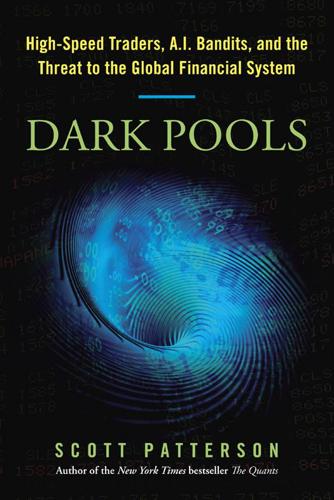
Dark Pools: The Rise of the Machine Traders and the Rigging of the U.S. Stock Market
by
Scott Patterson
Published 11 Jun 2012
Heading west toward Trinity Church on the western terminus of the famed street, yellow cabs darting by along the deep and narrow canyon of skyscrapers, worried-looking men storming out of subway stations, Levine glanced up at the sculpted Georgia marble façade and Corinthian columns of the New York Stock Exchange, imperious as a Roman temple. Central exchanges such as the NYSE had first cropped up around the coffeehouses of Amsterdam, London, and Paris in the seventeenth century. Founded in 1792 by twenty-four men under a buttonwood tree, the NYSE had maintained a virtual monopoly on stock trading in the United States for nearly two hundred years. As such, it represented everything Levine hated about Wall Street. The inside information, the special deals, the secrecy of the connected. The money. The power. The Big Board. Trading at the NYSE took place on the floor of the exchange, beyond the ken of everyday investors, amid the haggling of a select group of insiders.
…
Twenty surge protectors, each the size of a tank, protected the site against power outages. In August 2010, just months after the Flash Crash, Project Alpha was ready for action. Evenly spaced around the large, nondescript building—nearly invisible to the traffic flowing around it on nearby roads and highways—were six buttonwood trees, planted in apparently un-ironic homage to the origin of the venerable stock exchange on Broad Street. That exchange was all but dead. Mahwah was the new floor, a powerful confluence of capitalism and state-of-the-art computer technology. While tourists snapped photos of the exchange’s marble façade on the corner of Wall and Broad, the real trading was taking place thirty miles away in Mahwah’s vast air-conditioned floors of computer servers.
…
In June 2010, Getco hired Elizabeth King, a seventeen-year SEC veteran and an expert in options markets. And now, with its move onto the NYSE’s hallowed floor, Getco was taking its place as the new king of the hill in the stock market, the direct descendant of the traders who’d founded the exchange under a buttonwood tree in 1792. The revolution started by Levine on January 16, 1996, with the launch of Island had come full circle. WEEKS after the NYSE’s Mahwah data center opened for trading, in early September, two old adversaries met again. The Financial Industry Regulatory Authority, formerly known as the National Association of Securities Dealers, or NASD, fined a New York trading firm $2.3 million and suspended several of its traders.

Nerds on Wall Street: Math, Machines and Wired Markets
by
David J. Leinweber
Published 31 Dec 2008
These are the little details that make market history come alive for me. 9 10 Nerds on Wall Str eet There’s so much technology in modern markets that it’s easy to forget that some of our favorite markets, like the New York Stock Exchange (NYSE), started out as very low-tech places. In 1792, the New York Stock Exchange was a bunch of guys standing around a buttonwood tree at 68 Wall Street shouting at each other on days when it didn’t rain or snow: We like our markets to be liquid, efficient, resilient, and robust. But this is hard to do when all the participants have to crowd around a tree and hope for good weather. So in 1794, we see the first big technological solution: the roof.
…
MIT recently merged its Artificial Intelligence Laboratory and Computer Science Laboratory, reflecting this merger of ideas. Along the path from hand signals to Deep Blue and the World Wide Web, we’ve seen some remarkable market applications of technology. This isn’t going to stop. We’ve come a long way since the traders moved from under the buttonwood tree into the Tontine Coffee House, but we’ve really just moved indoors in our use of information technologies. There is so much written about information overload that we have an information overload information overload. But as we have seen, technological patterns repeat. An Illustrated History of Wir ed Markets 29 Living through a technology revolution isn’t easy.
…
I’m confident in saying that there will in fact be room in the future for new people in the wired markets of the world, whether they are trading securities, emissions, or electrons. Ner ds Gone Gr een 341 Ogden Nash was mildly nostalgic but mostly joking when he said, “Progress might have been all right once, but it has gone on too long.” None of us will be going back to shouting under the Buttonwood tree. Notes 1. CUSIPs are issued by the U.S. Committee on Uniform Security Identification Procedures; they are nine-character alphanumeric security identifiers. See www.cusip .com for more than you need to know. 2. Brent Barker and Lucy Sanna, “Turning on Energy Efficiency,” EPRI Journal (Summer 2006): 4–13, http://mydocs.epri.com/docs/public/000000000001013720.pdf. 3.

Last Train to Paradise: Henry Flagler and the Spectacular Rise and Fall of the Railroad That Crossed an Ocean
by
Les Standiford
Published 4 Aug 2003
The Conchs were simply trying to vary the source of protein in their diet by setting small blazes that would flush the timid, two-and-a-half-foot-tall deer out of hiding and into snare traps or across the sights of a rifle. In addition, other settlers had established charcoal-making kilns on the island, where the flourishing buttonwood trees could be converted into a readily transported source of fuel. Unpredictable wind gusts and the general carelessness of the kiln operators often resulted in unintended conflagrations, and if that meant trouble for a bunch of railroad-building interlopers, there weren’t many Conchs who were going to lose sleep about it.
…
Belén College observatory Bell, Jack Big Coppit Big Pine Key Big Torch Key Biloxi, Mississippi Bingham, Robert Binghams of Louisville, The (Chandler) Birds of America, The (Audubon) Biscayne (steamer) Biscayne Bay Company Boca Chica Bogart, Humphrey Bolívar, Simon “bonus army” Boot Key Bow Channel Branch, G. R. Breakers Hotel, Palm Beach British Cayman Islands Brooke, J. R. Brown, J. H. Brown, Kevin Browne, Jefferson, writings of Bryan, William Jennings bubonic plague Bush, George H. W. buttonwood trees Cape Sable Card Sound Bridge Caribbean, U.S. business interests in Carrere, John Carta Blanca observatory Carter, Oberlin M. Casa Marina Hotel, Key West Cayman Islands, laborers from Census, U.S. Chandler, David Leon Chandler, Mary Voelz Chapin, George M. charcoal kilns Civil War, U.S.
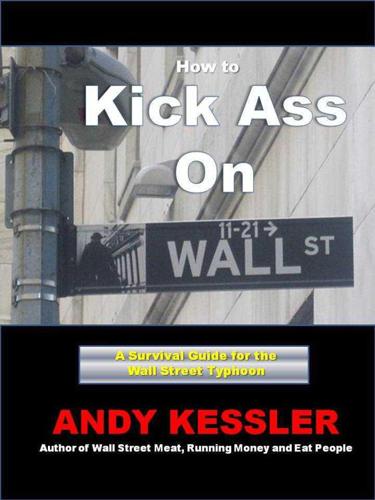
How to Kick Ass on Wall Street
by
Andy Kessler
Published 4 Jun 2012
When I think of Wall Street, I think of alpha dogs generating revenue at all cost, getting deals done, fighting for market share against all the other firms, and then at the end of the year, the political knives come out trying to carve up the ever growing bonus pool, though often each other. * * * So let’s go back. It’s been said that a stock exchange can only be as large as a voice can carry. On May 17, 1792 after years of shouting out on the street, a group of 24 prominent brokers met under a Buttonwood tree at what is now 68 Wall Street, and decided to move indoors, so to speak. They created the New York Stock and Exchange Board, copying European exchanges and “pledge ourselves to each other that we will not buy or sell from this day for any person whatsoever, any kind of Public Stock, at least than one quarter of one percent Commission on the Specie value and that we will give preference to each other in our Negotiations.”
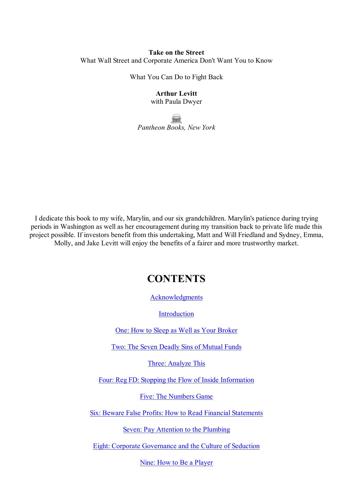
file:///C:/Documents%20and%...
by
vpavan
But while both markets have made huge strides, more can be done, especially at the New York Stock Exchange, which has resisted trading technologies that would erode the franchise of its specialists and floor brokers. The evolution of our markets is like the nine innings of a baseball game— and we're only in the top of the third inning. The Buttonwood Tree To understand the stock markets of today, it helps to understand the origins of the NYSE. On May 17, 1792, twenty-four commodities merchants and traders signed a pact to trade securities, at fixed commissions, under a buttonwood tree facing 68 Wall Street. At the time, about the only securities that traded were government bonds issued to pay for the Revolutionary War and stocks issued by the Bank of the United States.

Against the Gods: The Remarkable Story of Risk
by
Peter L. Bernstein
Published 23 Aug 1996
The rapid development of the insurance business at about the time Graunt and Halley published their research is no coincidence. It was a sign of the times, when innovations in business and finance were flourishing. The English word for stockbroker-stock jobber-first appeared around 1688, a hundred years before people started trading stocks around the Buttonwood tree on Wall Street, New York. Corporations of all kinds suddenly appeared on the scene, many with curious names like the Lute-String Company, the Tapestry Company, and the Diving Company. There was even a Royal Academies Company that promised to hire the greatest scholars of the age to teach the 2,000 winners of a huge lottery a subject of their own choosing.
…
The opprobrium attached to options during the so-called tulip bubble was in fact cultivated by vested interests who resented the intrusion of interlopers onto their turf 2 In the United States, options appeared early on. Brokers were trading put and call options on stocks as early as the 1790s, not long after the famous Buttonwood Tree Agreement established what was to become the New York Stock Exchange. An ingenious risk-management contract was issued on June 1, 1863, when the Confederate States of America, hard up for credit and desperate for money, issued the "7 Per Cent Cotton Loan." The loan had some unusual provisions that gave it the look of a derivative instrument.3 The principal amount was not repayable in Confederate dollars nor was it repayable at the Confederate capitol in Richmond, Virginia.

The Rough Guide to New York City
by
Rough Guides
Published 21 May 2018
Not only did the public snap them up, but merchants also started trading the bonds, along with bills of exchange, promissory notes, and other commercial paper. Trading became so popular that in 1792 a group of 22 stockbrokers and merchants gathered beneath a buttonwood tree on Wall Street, signing the “Buttonwood Agreement” and forming the initial trading group that would go on to be renamed the New York Stock Exchange in 1817. The event is commemorated by a tiny buttonwood tree on the sidewalk in front of 18 Broad St (it’s not the original). Financial District highlights African Burial Ground Visitor Center Rare and fascinating insight into the lives of African slaves in colonial New York.
…
The seat of the federal government was transferred to the District of Columbia a year later. Immigration and civil war In 1790 the first official census of Manhattan numbered the population around 33,000. Business and trade were steadily increasing, with the forerunner of the New York Stock Exchange created under a buttonwood tree on Wall Street in the early 1800s and ferry services established between New York and Albany, and between Brooklyn and Manhattan. In 1825, the completion of the Erie Canal (running from the Hudson River across the state to the Great Lakes) opened up internal trade and increased demand for cheap labour.
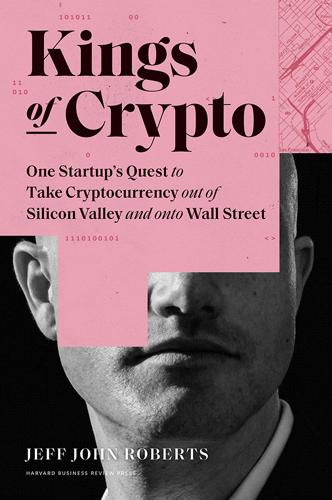
Kings of Crypto: One Startup's Quest to Take Cryptocurrency Out of Silicon Valley and Onto Wall Street
by
Jeff John Roberts
Published 15 Dec 2020
Crypto-anarchists with dreadlocks mingled with Wall Street traders wearing $5,000 suits and clutching fat stacks of bills, all of them gone mad for bitcoin. The open-air trading space harked back to one more than two hundred years earlier, when popular lore says men in Manhattan first traded stocks under a buttonwood tree. Many of the people at the meetups were like Olaf, using bitcoin for fun or in the name of some ideal. Unfortunately for the credibility of the young currency, they were far from the only ones using bitcoin. So were drug dealers, money launderers, hit men, extortionists, and every sort of hustler and lowlife imaginable.

Bitcoin for the Befuddled
by
Conrad Barski
Published 13 Nov 2014
Satoshi Square If meeting with strangers one-on-one makes you uncomfortable, you may be interested in going to a Satoshi Square event. Several major cities, such as New York, San Francisco, Boston, Toronto, and Vancouver, have had regular live Bitcoin exchanges where large groups of people meet in public spaces to buy and sell bitcoins. These meetups are also called buttonwood exchanges, named after the buttonwood tree under which the original Wall Street traders supposedly traded in the 1700s. Still Don’t See a Buying Option That Works for You? If none of the options discussed in this chapter meet your needs for acquiring bitcoins, you have another alternative to acquire bitcoins that is probably better than any other: Sell something to bitcoiners for bitcoins!

Frommer's New York City Day by Day
by
Hilary Davidson
Published 6 Jan 2006
(The real stars of the Forbes collection, 12 Fabergé Over 10,000 miniature figures are on view at the Forbes Galleries. 06_579312 ch02.qxd 10/3/05 10:01 AM Page 39 39 8 New York Stock Exchange. The serious action is here on Wall Street, a narrow lane dating to the 18th-century. At its heart is the NYSE, the world’s largest securities exchange. The NYSE came into being in 1792, when merchants met daily under a nearby buttonwood tree to trade U.S. bonds that had funded the Revolutionary War. In 1903 traders moved into this Beaux Arts building designed by George Post. The NYSE is surrounded by heavy security and is not open to the public. 20 Broad St. (btwn Wall The New York Stock Exchange. Imperial Eggs, were sold, fittingly, to a Russian tycoon in 2004; he plans to return them to their Russian homeland.)
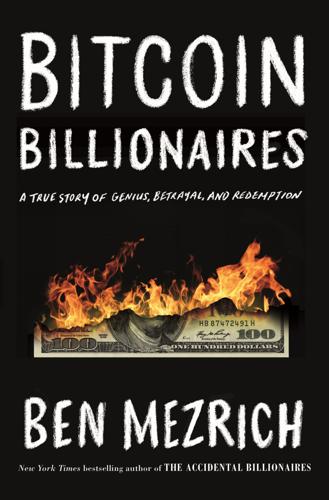
Bitcoin Billionaires: A True Story of Genius, Betrayal, and Redemption
by
Ben Mezrich
Published 20 May 2019
As far as the twins were concerned, getting the Bitcoin story out there was only the first step in the journey. Getting people into Bitcoin was the next; it wasn’t a coincidence that they were spending most of their time discussing Bitcoin in New York, which was ground zero of the world’s financial system—where it all began. In 1792, twenty-four stockbrokers signed the Buttonwood Agreement under a buttonwood tree located outside 68 Wall Street, creating the New York Stock Exchange. No matter what the ideologues believed, no matter how much they brayed about bringing down banks and governments, the twins knew that if Bitcoin was going to succeed, Wall Street was going to have to get involved. After Mellon was off, blending into the foot traffic on Astor Place, Tyler turned back to his brother.
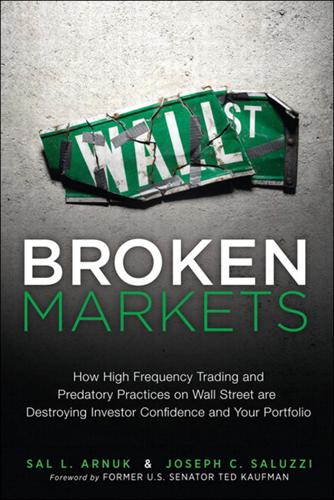
Broken Markets: How High Frequency Trading and Predatory Practices on Wall Street Are Destroying Investor Confidence and Your Portfolio
by
Sal Arnuk
and
Joseph Saluzzi
Published 21 May 2012
New York Stock Exchange, Service Description, New York Stock Exchange website, http://www.nyse.com/pdfs/Colocation-NYSE-Euronext-US-Liquidity-Center.pdf. 6. New York Stock Exchange, Price List 2012, U.S. Equities website, https://usequities.nyx.com/sites/usequities.nyx.com/files/nyse_price_list_01.01.12_0.pdf. 7. Peter Chapman, “A Buttonwood Tree Grows in Mahwah” (May, 2010), Traders Magazine.com, http://www.tradersmagazine.com/issues/23_308/buttonwood-nyse-mahwah-nyfix-colocation-data-center-105760-1.html. 8. Bob Ivry, Whitney Kisling, and Max Abelson, “How America Ceded Capitalism’s Bastion to German Boerse Seizing Big Board” (July 5, 2011), Ethnic Cliques, Bloomberg website, http://www.bloomberg.com/news/2011-07-06/how-america-ceded-capitalism-s-bastion-to-germans.html. 9.

Fodor's Costa Rica 2012
by
Fodor's
Published 6 Oct 2011
One of the first northern Nicoya beaches to experience the wonders of overdevelopment—a fact immortalized in the concrete towers that straggle up the hill above the bay—Flamingo still has some hidden charms, including one of the loveliest Blue Flag beaches and one of the best restaurants in Costa Rica. The place is still abuzz with real-estate activity, and any ledge of land with a view is a building site. But Flamingo Beach, hidden away to the southwest of the town, is picture-perfect, with almost-white sand sloping into a relatively calm sea and buttonwood trees separating it from the road. This beach is great for swimming, with a fine-sand bottom and no strong currents, though there are a few submerged rocks in front of the Flamingo Beach Resort, so you should swim a bit farther south. There’s sometimes a bit of surf, so if the waves are big, keep your eye on little paddlers.
…
Contrary to the name, the beach is not black, but rather beige with dark streaks. It’s not great for swimming because it tends to have big waves and is lined with rocks, though there is one short stretch of clear sand to the south of the one hotel and at low tide a large tidal pool forms there. The spindly buttonwood trees that edge the beach provide sparse shade. Getting Here and Around From Playa Avellanas, continue south 10 minutes on the rough beach road to Playa Negra. If it’s rainy season and the road is too rough, you can approach along a slightly more civilized route from Santa Cruz. Drive 27 km (16½ mi) west, via Veintisiete de Abril, to Paraíso, then follow signs for Playa Negra for 4 km (2½ mi).
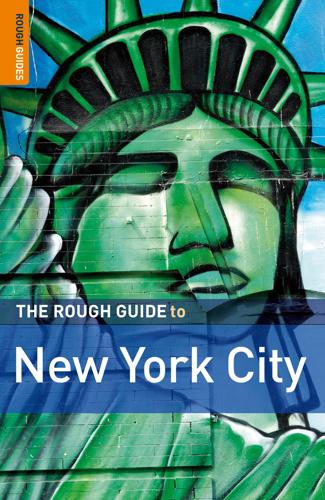
The Rough Guide to New York City
by
Martin Dunford
Published 2 Jan 2009
It was here in 1735 that printer John The early days of stocks and bonds 52 In order to help America finance the Revolutionary War, Secretary of the Treasury Alexander Hamilton offered $80 million worth of bonds up for sale. Not only did the public snap them up, but merchants also started trading the bonds, along with bills of exchange, promissory notes, and other commercial paper. Trading became so popular that in 1792 a group of 22 stockbrokers and merchants gathered beneath a buttonwood tree on Wall Street, signing the “Buttonwood Agreement” and forming the initial trading group that would go on to be renamed the New York Stock Exchange in 1817. In the 1840s, a more individualistic group of stockbrokers forged a similar bond on the curbs of Broad Street. These “curb brokers,” who specialized in risky stocks, were unable to meet the requirements of the New York Stock Exchange, but survived nonetheless, with phone clerks in the windows of buildings several stories above the street using hand signals to relay customers’ orders.
…
Walt Whitman eulogized the city in his poems and Henry James recorded its manners and | History The late nineteenth century CONTEXTS In 1790 the first official census of Manhattan numbered the population around 33,000. Business and trade were steadily increasing, with the forerunner of the New York Stock Exchange created under a buttonwood tree on Wall Street in the early 1800s and ferry service established between New York and Albany, and between Brooklyn and Manhattan, a few years later. In 1825, the completion of the Erie Canal (running from the Hudson River across the state to the Great Lakes) opened up internal trade and increased demand for cheap labour.

Fodor's Costa Rica 2013
by
Fodor's Travel Publications Inc.
Published 1 Oct 2012
One of the first northern Nicoya beaches to experience the wonders of overdevelopment—a fact immortalized in the concrete towers that straggle up the hill above the bay—Flamingo still has some hidden charms, including one of the loveliest Blue Flag beaches and one of the best restaurants in Costa Rica. The place is still abuzz with real-estate activity, and any ledge of land with a view is a building site. But Flamingo Beach, hidden away to the southwest of the town, is picture-perfect, with almost-white sand sloping into a relatively calm sea and buttonwood trees separating it from the road. This beach is great for swimming, with a fine-sand bottom and no strong currents, though there are a few submerged rocks in front of the Flamingo Beach Resort, so you should swim a bit farther south. There’s sometimes a bit of surf, so if the waves are big, keep your eye on little paddlers.
…
Contrary to the name, the beach is not black, but rather beige with dark streaks. It’s not great for swimming because it tends to have big waves and is lined with rocks, though there is one short stretch of clear sand to the south of the one hotel and at low tide a large tidal pool forms there. The spindly buttonwood trees that edge the beach provide sparse shade. Getting Here and Around From Playa Avellanas, continue south 10 minutes on the rough beach road to Playa Negra. If it’s rainy season and the road is too rough, you can approach along a slightly more civilized route from Santa Cruz. Drive 27 km (16½ miles) west, via Veintisiete de Abril, to Paraíso, then follow signs for Playa Negra for 4 km (2½ miles).

Lonely Planet Jamaica
by
Lonely Planet
Treasure Beach 1Sights 1Calabash Bay BeachB3 2Fishermen's BeachA2 3Jack Sprat BeachA2 4Old Wharf BeachC4 4Sleeping 5Golden Sands Beach HotelA2 6Ital RestD4 7Jake's HotelB2 8Katamah Beachfront ResortA1 9Kudeyha GuesthouseB3 10Marblue Villa Suites Boutique HotelB3 11Treasure Beach HotelA1 12Waikiki Guest HouseA2 13Welcoming VibesA1 5Eating 14Hold a Vibz CafeC3 15Jack SpratA2 Jake's Country CuisineB2 16Kim's PlaceA1 17Mellow YellowA2 18Pardy'sB2 19Smurf's CafeA1 6Drinking & Nightlife 20Eggy's Beach BarA2 21Fisherman's NightclubB2 22Frenchman's ReefA2 3Entertainment 23Treasure Beach Sports ParkB2 7Shopping 24Africa VillageC3 25Callaloo Gift ShopA2 26Treasure Beach Women's GroupC3 Beaches Fishermen's BeachBEACH ( MAP GOOGLE MAP ; Frenchman's Bay) This is the most centrally located beach running east from the Treasure Beach Hotel as far as Jack Sprat Beach. It is watched over by a landmark buttonwood tree that has long attracted the attention of poets, painters and wood-carvers who ply their wares. It's a good place for sunning and swimming, and a popular spot for watching the sunset. Jack Sprat BeachBEACH ( MAP GOOGLE MAP ; Frenchman's Cove) At the western edge of Jake’s Hotel, brightly painted wooden fishing boats are pulled up on the sand, and there is invariably a fisher or two on hand tending the nets.

Higher: A Historic Race to the Sky and the Making of a City
by
Neal Bascomb
Published 2 Jan 2003
The rattle of ticker tapes and elevated trains had long since replaced the blackbird’s song. Shoeshine boys lined the corners and chauffeurs and taxicab drivers crowded the streets waiting for their customers. It was a long way from the whipping posts that once populated the area and the old Buttonwood Tree underneath which merchants traded the first stocks. Severance and the Starrett Brothers entered this melee, charged with the job of demolishing buildings of heavy masonry, setting foundations seventy feet deep into bedrock, delivering seventeen thousand tons of steel, and managing the legions to do the work.
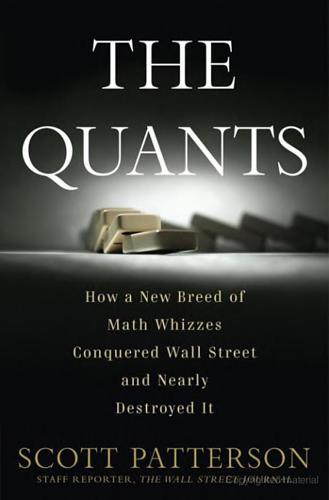
The Quants
by
Scott Patterson
Published 2 Feb 2010
It involves buying an asset in one market and almost simultaneously selling that asset, or its near equivalent, in another. Say gold is trading for $1,000 in New York and $1,050 in London. A fleet-footed arbitrageur will buy that New York gold and sell it in London (instantaneously), pocketing the $50 difference. While this was difficult when traders were swapping stocks beneath a buttonwood tree on Wall Street in the eighteenth century, the invention of the telegraph—and the telephone, the high-speed modem, and a grid of orbiting satellites—has made it much easier to accomplish in modern times. Such obvious discrepancies in practice are rare and are often hidden in the depths of the financial markets like gold nuggets in a block of ore.
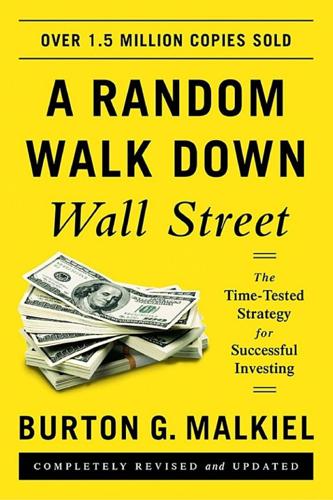
A Random Walk Down Wall Street: The Time-Tested Strategy for Successful Investing (Eleventh Edition)
by
Burton G. Malkiel
Published 5 Jan 2015
HFT involves the placement of high-speed computers in close proximity to stock-market servers to give some participants the ability to buy and sell stocks faster than the blink of an eye. In a sense, it is merely the next development in response to investors’ ever-increasing appetite for speed. From shouting orders from office buildings to traders standing under a buttonwood tree on Wall Street in 1792, technology has dramatically improved the efficiency of trading, reducing transaction costs and increasing liquidity for all investors. It has also helped ensure that market-moving news is reflected in stock prices as rapidly as possible. It’s easy to stir up fear over such trading activity, but most stock-market volume is conducted over these high-speed networks.
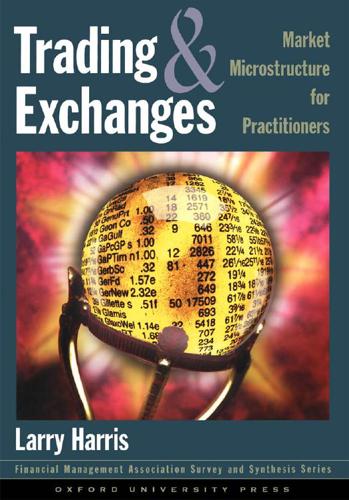
Trading and Exchanges: Market Microstructure for Practitioners
by
Larry Harris
Published 2 Jan 2003
We discuss the implications of exchange rules throughout this book. Many securities exchanges also regulate their listed firms. For example, their listing standards generally require a minimum level of financial reporting. * * * ▶ The Buttonwood Tree Agreement The New York Stock Exchange traces its beginnings to an agreement traders made in 1792 to regulate their commissions and to trade with each other. According to legend, the traders met under a buttonwood tree, near what is now Wall Street in lower Manhattan. Their written agreement—which entered the NYSE archives in 1840—indicates that they all would charge their clients no less than 0.25 percent commission for their brokerage services.

A First-Class Catastrophe: The Road to Black Monday, the Worst Day in Wall Street History
by
Diana B. Henriques
Published 18 Sep 2017
When John Phelan Sr. died at age sixty-one in 1966, his funeral service was a pontifical requiem mass at St. Patrick’s Cathedral in Manhattan. Tradition, linking generations of fathers and sons, was the lifeblood of the NYSE trading floor. The NYSE traced its roots to two dozen stock traders who in 1792 drew up rules to govern the trading they regularly conducted, first under a fabled buttonwood tree and then in a nearby coffeehouse. As the young country grew, the NYSE, familiarly known as the “Big Board,” emerged as its premier stock market, first among a host of smaller city exchanges scattered from Boston to San Francisco. Since 1903, the NYSE’s working day had begun with the insistent clang of a bell rung on a handsome stone balcony at one end of the trading floor.

An Empire of Wealth: Rise of American Economy Power 1607-2000
by
John Steele Gordon
Published 12 Oct 2009
Philadelphia, the leading financial market in the country at that time, thanks to the location there of the headquarters of the Bank of the United States, established a real stock exchange in 1792. In New York a group of twenty-one individual brokers and three firms signed an agreement—called the Buttonwood Agreement because it was, at least according to tradition, signed beneath a buttonwood tree (today more commonly called a sycamore) outside 68 Wall Street. In it they pledged “ourselves to each other, that we will not buy or sell from this day for any person whatsoever any kind of Public Stock, at a less rate than one quarter per cent Commission on the specie value, and that we will give preference to each other in our negotiations.”
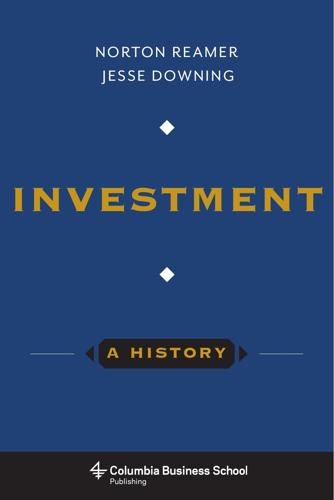
Investment: A History
by
Norton Reamer
and
Jesse Downing
Published 19 Feb 2016
With the French Revolution beginning in 1789 and the Napoleonic Wars lasting until 1815, disruption and destruction in France and the Low Countries cleared the way for a rising England.67 88 Investment: A History The American Experience In the United States, the federal government floated $77.1 million in debt in 1790 to pay back costs incurred by the American Revolution, giving birth to the first US public debt markets.68 On May 17, 1792, the Buttonwood Agreement (so named because it was signed under a buttonwood tree by twenty-four stockbrokers) was executed. Soon, in 1793, the Tontine Coffee House in New York City became a forum for trading government debt and equities, while many of the stockbrokers’ colleagues traded securities in the street nearby.69 The Buttonwood Agreement created what is today the New York Stock Exchange.

Discover Caribbean Islands
by
Lonely Planet
Beaches At the eastern ‘bottom’ of Treasure Beach you’ll find Great Bay, a pretty, rural patchwork of fields and beach; Jack Spratt Beach, at the western edge of Jake’s Place, is next along as you head north and west; here brightly painted wooden fishing boats are pulled up on the sand and there is invariably a fisherman or two on hand tending the nets. This is the safest beach for swimming. The next beach to the west is Frenchman’s Beach, watched over by a landmark ‘buttonwood’ tree that has long attracted the attention of poets, painters and woodcarvers who ply their wares. It’s a great place to arrange trips to the Pelican Bar or Black River. In the opposite direction from Jake’s there’s Calabash Bay Beach, with a few cook and rum shops and a sandy beach. Sleeping Nuestra Casa Guest House Guesthouse $ (965-0152; www.billysbay.com; d US$50; ) Nuestra Casa is just gorgeous; it’s a pretty house run by the lovely Roger and his mum Lillian, who together with their Jamaican staff are the epitome of hospitality.

The Survival of the City: Human Flourishing in an Age of Isolation
by
Edward Glaeser
and
David Cutler
Published 14 Sep 2021
But you don’t need bedrock to build up. Chicago—the city that gave us the skyscraper—is built on mud. Manhattan’s architectural shape owes more to water than stone. The older Downtown cluster grew up around the ships that once docked at the south of the city. New York’s stock exchange began with an agreement signed under a buttonwood tree on Wall Street, by men such as Ephraim Hart—sadly, they were all men—whose livelihoods were tied to the wharves. Hart listed his occupation in 1816 as a dock builder. The Midtown cluster is anchored by the city’s two major rail stations: Grand Central Terminal and Pennsylvania Station. Penn Station’s location is linked to the Hudson River, which was far harder to cross than the modest waterways that separate Manhattan from Long Island and the Bronx.

The Rough Guide to Jamaica
by
Thomas, Polly,Henzell, Laura.,Coates, Rob.,Vaitilingam, Adam.
He’ll also take you to Little Ochi (see p.252; 3hr 30min; $120); a ride up the coast and along Black River to see the crocodiles (4hr; $120); and line fishing ($60/hr). All prices are for two people, and there are good reductions for larger groups. Another option is a sunset cruise on Shabba’s Shallow Bar (a home-made catamaran partially shaded with a thatch roof that covers the bar; $20/person) that cruises from the famous twisted Buttonwood tree at the end of Jack Sprat beach to Great Bay and the Pedro Bluff when the weather is nice and the sea is calm. Joseph “Blacka” Brown (T 376 9944) is another reliable tour operator who offers a popular Kingfish Cook-Out tour – a day-long trip (weather permitting) that takes you to a private beach where he will cook up king fish or lobster and serve drinks.

The Crisis of Crowding: Quant Copycats, Ugly Models, and the New Crash Normal
by
Ludwig B. Chincarini
Published 29 Jul 2012
What happened to those poor souls who bought stocks at $100,000 per share or sold them for as little as a penny? Could crowd behavior be partly responsible for the distortions in the market movements of May 6? FIGURE 17.1 Apple, Accenture, and Sotheby’s Stock Prices Source: Nanex. Background In the 1700s, stock traders met under a buttonwood tree on Wall Street. In 1792, they created the New York Stock Exchange (NYSE). For more than 200 years, individuals traded stocks face to face. Computer technology has since made trading blindingly fast and largely anonymous. In 2006, the NYSE became an electronic exchange, saying goodbye to the traditional floor brokers and specialists who ran around on those old wooden floors, screaming prices as they went.2 Stock purchases and sales can be completed through a variety of networks: a national exchange such as the NYSE, an electronic communication network (ECN), a large broker-dealer, or a dark pool.
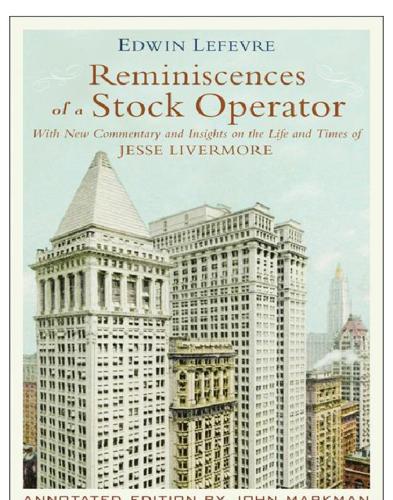
Reminiscences of a Stock Operator
by
Edwin Lefèvre
and
William J. O'Neil
Published 14 May 1923
No man can always have adequate reasons for buying or selling stocks daily—or sufficient knowledge to make his play an intelligent play. 2.1 By the late 1890s, the New York Stock Exchange was already a 100-year-old institution that had survived wars, depressions, fires, and panics. Begun in 1792 by 24 securities brokers who agreed on a minimum commission of 0.25% when trading between each other, it moved progressively from beneath a buttonwood tree on Wall Street, to the Tontine Coffeehouse near Water Street, to the back room of the defunct Courier & Enquirer newspaper, and finally to the grand structure at 12 Broad Street, where Livermore and colleagues would view it with a mixture of respect, awe, distrust, and hopefulness. Although Livermore was not a member of the NYSE and therefore could not trade from the floor, he would have been familiar with the sights, sounds, and smells of the exchange building, which was torn down and rebuilt in its current form in 1903.
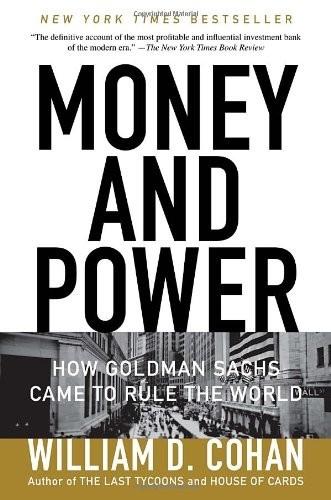
Money and Power: How Goldman Sachs Came to Rule the World
by
William D. Cohan
Published 11 Apr 2011
CHAPTER 6 / The Biggest Man on the Block CHAPTER 7 / Caveat Emptor CHAPTER 8 / The Goldman Way CHAPTER 9 / A Formula That Works CHAPTER 10 / Goldman Sake CHAPTER 11 / Busted CHAPTER 12 / Money CHAPTER 13 / Power CHAPTER 14 / The College of Cardinals CHAPTER 15 / $10 Billion or Bust CHAPTER 16 / The Glorious Revolution CHAPTER 17 / It’s Too Much Fun Being CEO of Goldman Sachs CHAPTER 18 / Alchemy CHAPTER 19 / Getting Closer to Home CHAPTER 20 / The Fabulous Fab CHAPTER 21 / Selling to Widows and Orphans CHAPTER 22 / Meltdown CHAPTER 23 / Goldman Gets Paid CHAPTER 24 / God’s Work ACKNOWLEDGMENTS NOTES INDEX Other Books by This Author PROLOGUE THE PYRRHIC VICTORY Wall Street has always been a dangerous place. Firms have been going in and out of business ever since speculators first gathered under a buttonwood tree near the southern tip of Manhattan in the late eighteenth century. Despite the ongoing risks, during great swaths of its mostly charmed 142 years, Goldman Sachs has been both envied and feared for having the best talent, the best clients, and the best political connections, and for its ability to alchemize them into extreme profitability and market prowess.
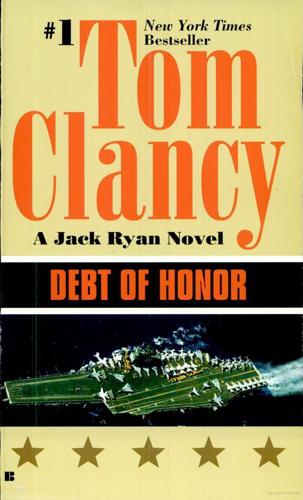
Debt of Honor
by
Tom Clancy
Published 2 Jan 1994
The reason was that the trading houses all used computers, and the computers used highly complex mathematical models both to analyze and predict what the market was doing. The models were based on painstaking historical research that covered the NYSE all the way back to when it was a place under the shade of a buttonwood tree. Teams of historians and mathematicians had plotted every move in the market. These records had been analyzed, compared with all identifiable outside factors, and given their own mathematically drawn measure of reality, and the result was a series of very precise and inhumanly intricate models for how the market had worked, did work, and would work.
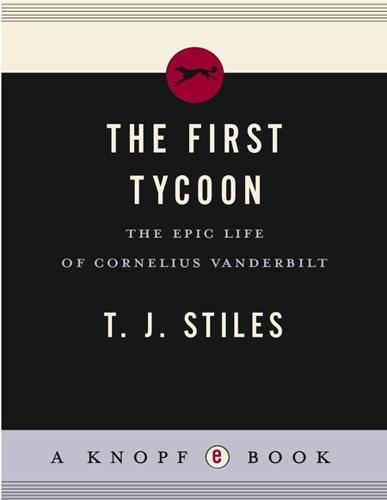
The First Tycoon
by
T.J. Stiles
Published 14 Aug 2009
The Stock was soon joined by shares in two banks: the new, federally chartered Bank of the United States (the second part of Hamilton's financial plan), and the older Bank of New York, which acquired a state charter and issued shares that year. Investors in New York began to meet six times a week for formal stock auctions at the Merchants' Coffee House on Wall Street; between sessions, they clustered outside under a buttonwood tree to trade informally. In 1792, they formalized the stock market with the Buttonwood Agreement, setting fixed commissions for brokers (or “stockjobbers”) and establishing the Tontine Coffee House at the corner of Wall and Water streets as a physical exchange (though the informal “curb market” continued to thrive).27 These new institutions laid a foundation that was absolutely essential for the future.

Caribbean Islands
by
Lonely Planet
Jack Spratt Beach , at the western edge of Jake’s Place, is next along as you head north and west; here brightly painted wooden fishing boats are pulled up on the sand and there is invariably a fisherman or two on hand tending the nets. This is the safest beach for swimming. The next beach to the west is Frenchman’s Beach , watched over by a landmark ‘buttonwood’ tree that has long attracted the attention of poets, painters and woodcarvers who ply their wares. Local boat captains congregate here, as does everyone else in the area once the sun starts to set. It’s is a great place to arrange trips to the Pelican Bar or Black River. In the opposite direction from Jake’s there’s Calabash Bay Beach , with a few cook and rum shops and a sandy beach, and Old Wharf Beach , the most private of the bunch, although still accessible by anyone who makes the effort to totter down to the sand.